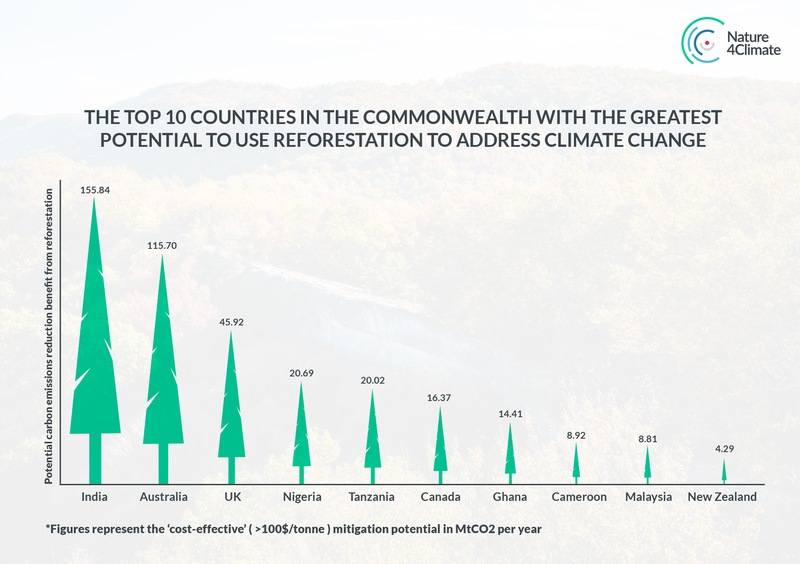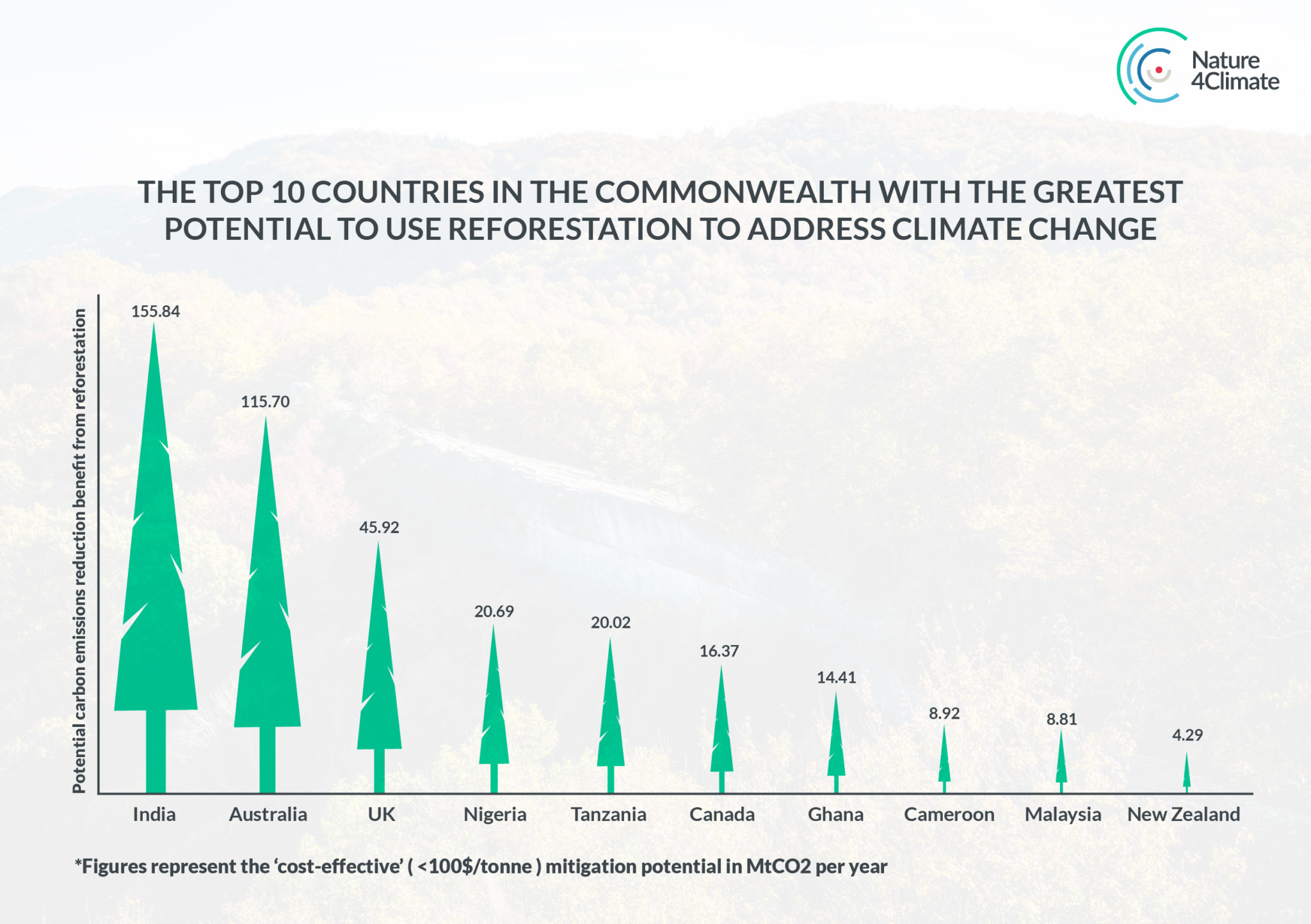Upscaling nature’s potential for climate mitigation – will Commonwealth countries lead the way?

The Queen’s Commonwealth Canopy has become one of the leading efforts to protect and restore the world’s forests. So far, the initiative has contributed to reforestation and afforestation efforts in 35 of the 53 Commonwealth countries.
The Queen’s Commonwealth Canopy has become one of the leading efforts to protect and restore the world’s forests. So far, the initiative has contributed to reforestation and afforestation efforts in 35 of the 53 Commonwealth countries.
“by protecting, managing and replanting their forests, the 53 Commonwealth countries can cost-effectively reduce global carbon emissions by 1,230 megatons CO2 per year, the equivalent of taking 263 million cars off the road.”
Justin Adams, Managing Director Global Lands, The Nature Conservancy and Will Turner, Senior Vice President & Senior Scientist, Conservation International
Last week during the Commonwealth Heads of Government Meeting (CHOGM) in London, a rainforest projected onto Buckingham Palace underscored the Queen’s “dream of a global network of trees to change the climate”.
The Queen’s Commonwealth Canopy, launched at the Paris climate summit three years ago, has become one of the leading efforts to protect and restore the world’s forests. So far, the initiative has contributed to reforestation and afforestation efforts in 35 of the 53 Commonwealth countries.
The projects are as diverse as these countries’ landscapes: in Namibia, the N/a’an Ku sê Forest Conservation Revegetation Project restores indigenous forests and reverses land degradation. Fiji established the Emalu Forest Conservation Area, a 7,400-hectare uninhibited forest. The Dolphin Head Forest Reserve is a 1,167-hectare site with the highest density of endemic plant species in Jamaica. And Australia committed to plant 20 million trees by 2020 to re-establish green corridors and urban forests, providing habitat to support threatened species and removing CO2 from the atmosphere.
The Rt Revd Nicholas Holtam, Bishop of Salisbury, stressed the significance of the Queen’s Canopy initiative last week in London. From the religious leader’s point of view, it is not only contributing to preserving forests for future generations but has a crucial role to play in slowing climate change and protecting us from its worst effects. This is all great to see, and partly because many Commonwealth countries are among those bearing the brunt of climate impacts.
Yet it is also time to see these efforts amplified to the scale needed for us to reach our Paris climate targets. The path to avoiding dangerous climate change will require transformation across sectors including rapid transition to renewable energy and natural climate solutions, pursued urgently and in parallel. Last year, research by a group of 15 scientific organizations including The Nature Conservancy, WRI and Woods Hole found that natural climate solutions can provide 37% of cost-effective CO2 mitigation needed through 2030 for a >66% chance of holding warming to below 2 °C.
As the Commonwealth meetings came to a close, we looked again at the data. We found that India, leading the group, could reduce over 150 MtCO2 per year by implementing cost-effective [1] reforestation measures, equivalent to removing more than 30 million cars from the streets. In total, by protecting, managing and replanting their forests, the 53 Commonwealth countries can cost-effectively reduce global carbon emissions by 1,230 megatons CO2per year, the equivalent of taking 263 million cars off the road. So, there are enormous opportunities to scale up these efforts.
[1] At less than—often much less than—the social cost of carbon of $100 per tonne of CO2e.

Our research found that New Zealand could deliver carbon emissions reductions of 4.29 Mt CO2per year by deploying reforestation measures. This could help the country meet its recently announced commitments to become carbon neutral by 2050 and cement Jacinda Ardern’s leading role at the forefront of the Commonwealth’s climate action. Since nearly half of New Zealand’s emissions come from farming, other natural climate solutions like optimising the use of fertilisers and restoring soil health will have a crucial role in the country’s efforts to reach this goal.
In fact, we will not be able to deliver carbon emissions reductions in line with the Paris climate agreement goals without natural climate solutions. Leaders must complement efforts in the energy, transport and industry sectors by adding the large but oft-neglected potential of better land management to the mix. We simply cannot afford to neglect these any longer.
We welcome the recent announcement by Claire Perry, the UK’s minister for energy and clean growth, that she would seek the Committee on Climate Change’s advice on what the UK needs to do to raise its climate ambition to deliver on Paris. We hope they will follow the innovative lead taken by Michael Gove, the Environment Minister and prioritise natural climate solutions as part of the mitigation mix.
To date, developed countries like the UK have been slow to see natural climate solutions as an important climate policy, especially compared with emerging economies like Mexico and Indonesia. But there are signs this is starting to change. This consultation could be the start of a much stronger, broader approach to land use and climate that contributes significantly to achieving the Paris goals.
To that end, the leadership shown by Commonwealth leaders on reforestation is fantastic. Other countries also need to look at this and see that natural climate solutions are a practical and economic solution to the huge challenge of climate action.